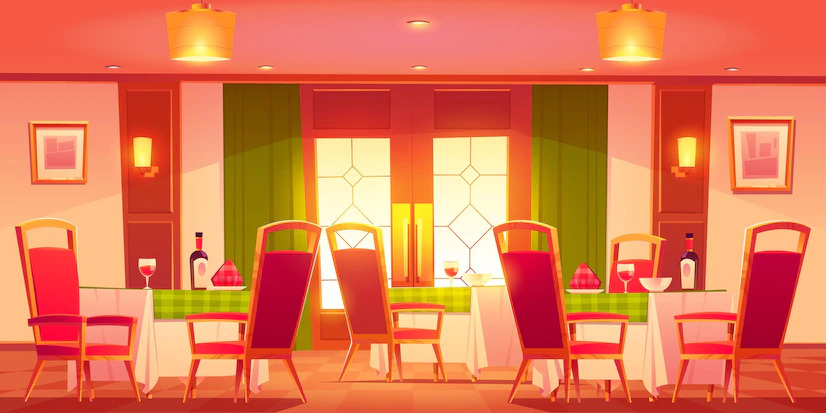Project Report For Heritage Restaurant
Introduction
Project report for Heritage Restaurant is as follows.
The Indian hospitality scene has always included heritage restaurants and hotels. From palaces, forts, castles, and Havelis, hotels with a sophisticated traditional ambiance and service standards have been created. The concept of heritage hotels is also promoted by the Indian government; these hotels have been authorized and are categorized.
The popularity of the historical experience has grown thanks to the heritage hotels. The idea for a heritage restaurant was subsequently born. Popular restaurant types include quick service restaurants, fast food establishments, fine dining establishments, and theme eateries.

The following features will be present at the Heritage restaurant:
It will be housed in an outdated section of a palace, fort, haveli, or bungalow (the official definition of heritage property is one, which was built prior to 1950 but it is not mandatory for a restaurant to follow this). Local tradition will be reflected in the architecture, façade, interior design, interior decor, furniture, and furnishing.
The property has the potential to be renovated and restored to add this flavour. North Karnataka, Saurashtra, and Awadhi traditional regional cuisine will be offered on the menu, however non-traditional cuisine may also be included depending on the state of the market.
To give the customer a rich legacy experience, numerous components will be used. The following list of examples:
1. Elegant dinnerware and cutlery made of metal and cast in the local design.
2. low-stool seating configuration (optional)
3. swings, benches, and other lounge furniture
4. extra activities: board games and hookah
5. a small craft store
The employees will dress in formal wear. There will be excellent service and a leisurely supper.
Project Report Sample On
Heritage Restaurant
Get Completely Custom Bankable Project Report
Evidently, it is too expensive to buy a huge historic property. It is advised that the promoter lease an adequate area of the heritage property for a long time in order to conduct the necessary modifications and outfitting (or the entire property in the event of a modest haveli, bungalow, or inner city home).
The restaurant will feature imaginatively picked images and writing about the building’s owners, residents, architects, the surrounding community, and other people related to it, as well as interesting events that the building was a part of. The objective is to impart a sense of history to the consumer because the non-food experience is meant to be just as worthwhile as the food experience.
Market Potential Of Heritage Restaurant
The size of the global heritage tourism industry was estimated at USD 556.96 billion in 2021, and it is anticipated to increase at a CAGR of 3.8% from 2022 to 2030.
Expenses

Product Cost Breakup

Reveneue Vs Expenses

Market Trend

The “heritage” attractiveness and content have given rise to a number of enterprises and endeavors. The Indian hotel industry has historically included historic properties. Customers value architecture, interior design, history, vintage, and atmosphere. In many cities, heritage walks are a top tourist destination.
Vintage automobile shows, collectors, and museums are crowded with visitors. In general, heritage is a concept whose popularity is rising in the wake of modernity’s advancement, especially among higher-income groups.
The market’s potential will mostly come from three groups: locals, corporations (including MICE), and tourists. In contrast to two other streams, the tourist flow is seasonal.
There is an event-based sub-stream within the tourism industry, which includes fashion shows, movie shoots, sporting events, and literary and arts festivals. These give room for group transactions and alliances. The event-based sub-stream creates opportunities for luring celebrities, enhancing the restaurant’s brand equity.
The restaurant will be cautious when it comes to catering to other streams (such as kitty parties) since it will try to project an image of being an aristocratic and classy setting, steering clear of patrons who will be loud or act in an unrefined manner. For instance, it might restrict such commerce to a small window of time, like 3 to 6 pm.
Depending on the city, the proportion of local resident stream to overall business will change. A credit sale may be indicated by the predominance of corporate business. The corporate and HN local resident streams suggest the possibility of recurrent business. In contrast to HNI/corporate business, the tourism industry may be significantly impacted by customer reviews.

